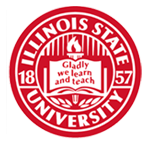Abstract
Critical thinking is considered to be an important aspect in the training of communication science and disorders students. This paper provides information on the definition, assessment, and teaching of critical thinking. Important critical thinking skills and dispositions include challenging assumptions underlying statements, recognizing the effect of context on perceptions, understandings, and interpretations of the world, developing alternative explanations for observed data they observe, and exhibiting reflective skepticism. Increasing these skills and dispositions help a student develop into a skilled clinician. Assessing students’ clinical thinking skills can be done with tests of general skills, but these often lack validity and reliability. Assessments also can test content or discipline specific thinking skills. Teaching critical skills and dispositions has been done in stand-alone courses and as material embedded within other courses. Within the courses, techniques such as problem-based learning, team-based learning, and case presentations have been effective with mind and concept mapping as tools to visualize how the students think about the material.
Recommended Citation
Morris, R. J., Gorham-Rowan, M. M., Robinson, J. H., & Scholz, K. (2018). Assessing and Teaching Critical Thinking in Communication Science and Disorders. Teaching and Learning in Communication Sciences & Disorders, 2(1).




